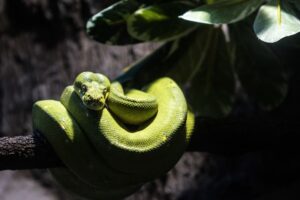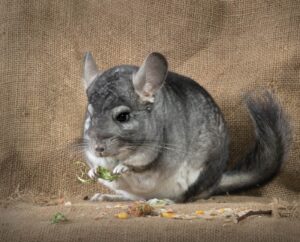Table of Contents
ToggleIntroduction
Red-footed tortoises (Chelonoidis carbonarius) are enchanting and unique reptiles known for their distinctive red and orange markings on their limbs, making them stand out among the tortoise species. What Do Red-Footed Tortoises Eat? These captivating creatures are native to South America, specifically in regions like Brazil, Paraguay, and northern Argentina. Red-footed tortoises make popular pets due to their friendly nature and manageable size, but to ensure their health and well-being, it’s crucial to understand their dietary requirements.
Habitat And Behavior
South American countries including Brazil, Paraguay, and northern Argentina are home to wild populations of red-footed tortoises. They are terrestrial animals but can also swim when necessary. These tortoises are opportunistic feeders, and their diet can vary depending on the food availability in their natural habitat.
The Natural Diet Of Red-Footed Tortoises
To understand what red-footed tortoises eat, it’s essential to delve into their natural diet in the wild. Red-footed tortoises primarily feed on a wide variety of plants, fruits, and occasionally, insects and small invertebrates. Here is a breakdown of their natural diet:
Fruits: Red-footed tortoises consume a variety of fruits in their natural habitat. It includes guava, figs, papaya, and fallen fruits from trees like mangoes. These fruits provide essential vitamins, minerals, and hydration for the tortoises.
Leaves and Vegetation: Their diet comprises leaves, flowers, and other plant materials. They often browse on low-growing shrubs and grasses. Their diet includes hibiscus leaves, dandelions, clover, and succulents.
Mushrooms and Fungi: Red-footed tortoises consume mushrooms and fungi when they come across them. These sources can provide additional nutrients and variety to their diet.
Insects and Invertebrates: While plant matter dominates their diet, red-footed tortoises may occasionally eat small invertebrates and insects. This behavior is more common in younger tortoises and may provide extra protein and essential nutrients.
Decaying Wood: They may also consume rotting wood, aiding digestion and providing essential minerals like calcium. It’s important to note that the diet of red-footed tortoises can vary based. On their specific habitat and seasonal availability of food sources.
How Big Do Red-Footed Tortoises Get?
The length of a red-footed tortoise’s shell can range anywhere from 12 to 14 inches. The average size difference between men and females is only a few millimeters. These tortoises belong to a moderate-sized species, which enables more caretakers to care for them successfully.
Feeding Schedule For Adult Red-Footed Tortoises
Tortoises with red feet grow very slowly into adults, and after a certain period, they stop growing altogether. Therefore, they will require a different quantity of food than infants and juveniles. The recommended feeding frequency for an adult Red-Footed tortoise is once every three days, and this frequency should be determined using the size of the head technique.
When compared to the other age groups, this amount of food may appear adequate; nevertheless, remember that the size of the head method also increases the size of the food portion. Since your tortoise is consuming more now than it did when it was a baby, you should not worry about its health.
Foods To Avoid
Although you must offer your red-footed tortoise a diet that is rich in variety, there are certain foods and chemicals that you should steer clear of:
High-Protein Foods: Red-footed tortoises shouldn’t be given high-protein diets. Avoid feeding red-footed tortoises high-protein foods like meat or pet food for dogs and cats due to the species’ lack of natural carnivory.
Processed and Junk Foods: Foods That Have Been Processed and Junk Foods You should avoid giving them processed foods, sugary snacks, and foods with a high salt content because these things might harm their health.
Toxic Plants: It is important to be aware of poisonous plants, such as rhubarb and oleander, which, if consumed, can harm your tortoise. Make sure that these toxic plants are not growing in their area.
Foods High in Oxalic Acid: Oxalic acid is found in plants like spinach and Swiss chard, and eating too much of it might reduce calcium absorption.
Feeding Flowers: That may have been Exposed to Herbicides or Pesticides. You should always wash and inspect any plants you take from your yard or garden to ensure they are free of herbicides or pesticides.
Fruits Derived from Citrus Trees: Red-footed tortoises may have trouble digesting citrus fruits because of their high acid content.
Where Can You Buy Red-Footed Tortoise?
Those who can make a commitment that will last their entire lives to their pets are the greatest candidates to keep red feet as pets. When provided with an appropriate diet and cage, tortoises have the potential to be the most docile of all pets.
Therefore, if you are interested in purchasing one, you should go to a store specializing in reptiles, an exhibit for reptiles, or a reptile trade center. You might also look for them in an internet store specializing in reptiles.
When looking, you should always be sure to purchase an animal that was bred in captivity. A pet caught in the wild is likely to develop stress syndromes and an increased likelihood of contracting diseases in the future if it is not properly cared for. You may also obtain much additional information on these incredible creations if you look it up online.
Breeding And Special Dietary Considerations
If you want to breed red-footed tortoises, you’ll need to give them extra calcium throughout the egg-laying season. If you want to guarantee that the female has sufficient calcium to create healthy eggs, you might increase the frequency of giving her a calcium supplement. In addition, you should give her a place to nest with the proper substrate for her to lay her eggs in.
Conclusion
Red-footed tortoises are delightful and fascinating reptiles, but caring for them requires understanding their dietary needs. You can ensure their health and well-being by offering a balanced diet that replicates their natural eating habits. Remember to provide UVB light, appropriate environmental conditions, and regular veterinary care to keep your red-footed tortoise thriving for many years. With proper nutrition and care, you’ll have a happy and healthy companion in your red-footed tortoise.







